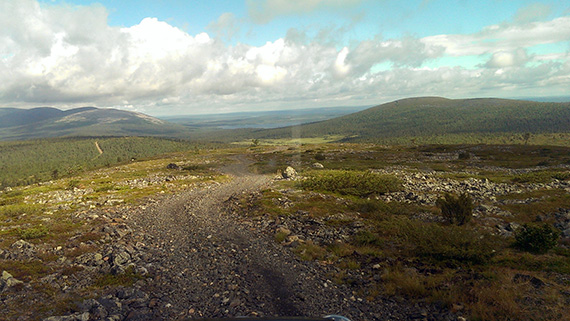New results from the Pallas research station: decreases in European emissions have not affected air quality in Western Lapland

The most significant new studies made in Pallas are related to air quality in Western Lapland. According to data produced by the Finnish Meteorological Institute, decreased air pollution emissions are only partially visible in pollution levels in Western Lapland. Ozone and hydrocarbon measurements from Pallas indicate that the levels have remained the same in the past 20 years, even though EU has cut volatile hydrocarbon compound emissions by up to 50%. This is due to the fact that air masses observed in Pallas reflect emission developments in a very extensive area, with emissions from Eastern Europe, for example, still on a significant level. Industrial emissions from the Kola Peninsula also have a remarkable effect on Lapland air quality. These emissions have decreased, which can be detected in Pallas as lower arsenic, nickel and sulfur dioxide levels. In autumn 2014, hundredfold sulfur dioxide levels were detected, which came as a surprise in light of previous levels. This pollution peak was, however, explained by massive sulfur emissions from the eruption of the Icelandic volcano.
Seasons visible in measurements
The new special issue also sheds light on the fact that the optical features of fine particles of the atmosphere, which affect the climate, vary between seasons, but no long-term trend has been detected in the series of measurements. Atmospheric carbon dioxide concentrations have also been measured at the top of Sammaltunturi since 1997. The global increase thereof is visible in the Pallas measurements: the carbon dioxide concentration has steadily increased by approximately 2 ppm per year. The seasons are clearly observable in these measurements, with lower carbon dioxide concentration during the growing season, when the photosynthesis in forests absorbs carbon dioxide from the atmosphere.
Global warming, in turn, affects the greenhouse gas exchange of mires rather through water level decreases than any direct increase in temperature. The Pallas research mire seems less sensitive to such changes as compared to southern mires. Even though mires and forests are the most important ecosystems in terms of absorbing carbon dioxide, lake emissions have a significant role in more extensive gas balances. Surprisingly, the Kenttärova spruce forest is a smaller carbon sink per hectare than the Lompolojänkkä mire a few kilometres away.
Rodent research attracting even global interest
The area was long governed by the Finnish Forest Research Institute, until the national park zone was transferred under Forest and Park Service (Metsähallitus) in 2002. Pallas has been a platform for nature research since the beginning of the 20th century, and weather observations have been made since 1935. In the early 1990's, the breadth of research subjects expanded from fluctuations in vole and lemming populations to air quality and greenhouse gases. In addition, changes in water quality are monitored in Pallasjärvi, Keimiöjärvi and the surrounding streams, fine particles in the air are monitored as well as the effect of soil properties on timberline tree species. The Pallas rodent studies are considered particularly interesting, even internationally, due to dramatic fluctuations in vole and lemming populations and high number of species in the small mammal community. Four-year cycles visible in population fluctuations began fading in the 1980's, but seem to have recurred strongly in the 2010's.
Pallas is a multidisciplinary research cluster
The Pallas research cluster is one of the most significant research infrastructures focused on the atmosphere and Nordic nature, therefore also attracting international interest. Research in Pallas is done through several research institutes (the Finnish Meteorological Institute, Finnish Environment Institute, Natural Resources Institute Finland, Geological Survey of Finland) and universities. The measurements are part of European or worldwide measurement networks. The most well-known among them is Global Atmosphere Watch (GAW), which observes greenhouse gas concentrations around the world. The Pallas Sammaltunturi is one of the northernmost stations in the GAW network, and by the data produced there, estimates of carbon dioxide and methane emissions and sinks from e.g. the poorly known northwest Russia can be done. Pallas is also part of the Arctic Monitoring and Assessment Programme (AMAP).
Further information:
Researcher Annalea Lohila, Finnish Meteorological Institute, tel. 029 539 5498, annalea.lohila@fmi.fi
Senior Researcher Timo Penttilä, Natural Resources Institute Finland, tel. 029 532 2071, timo.penttila@luke.fi
